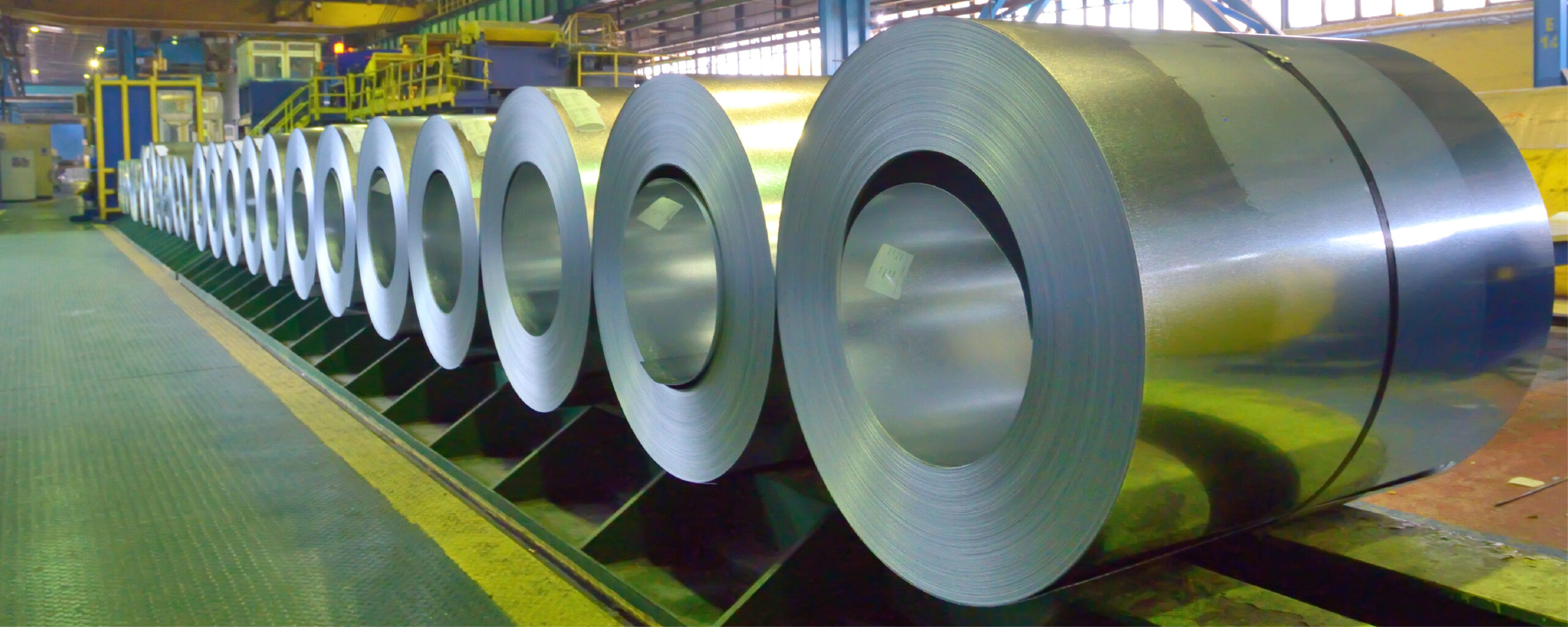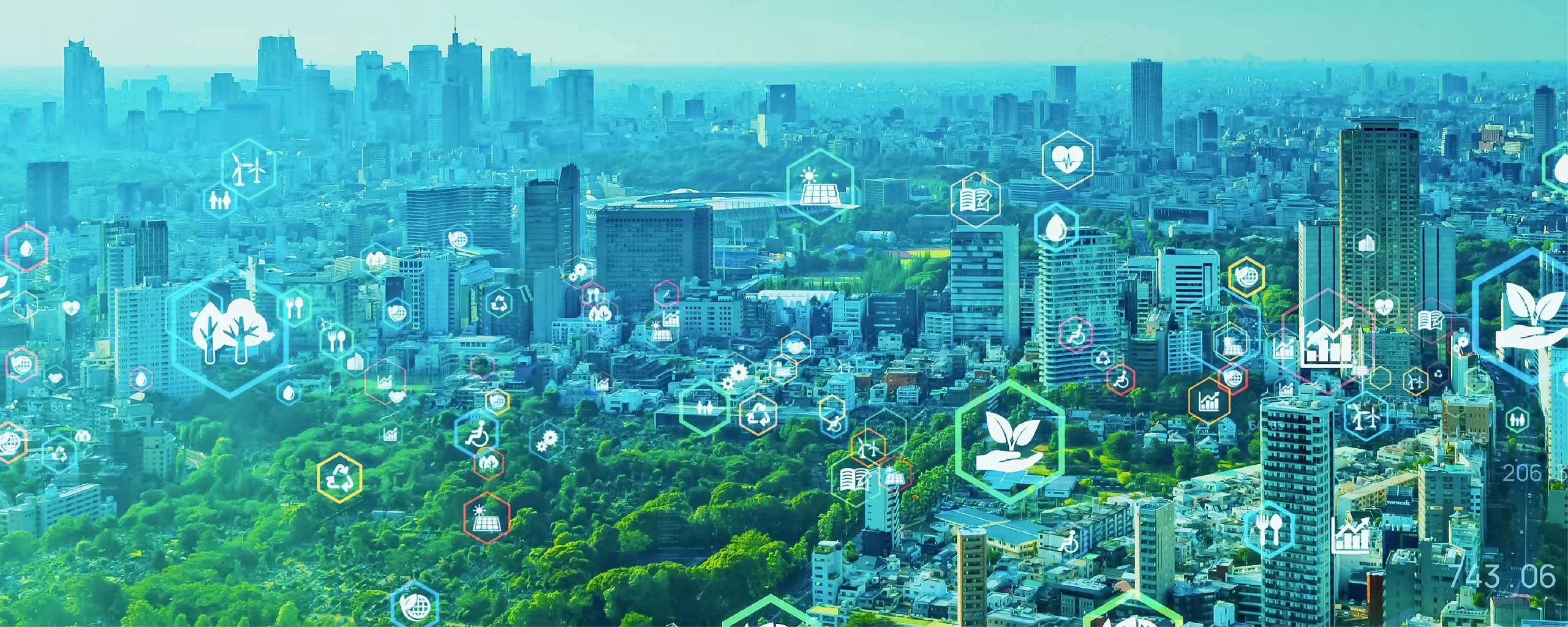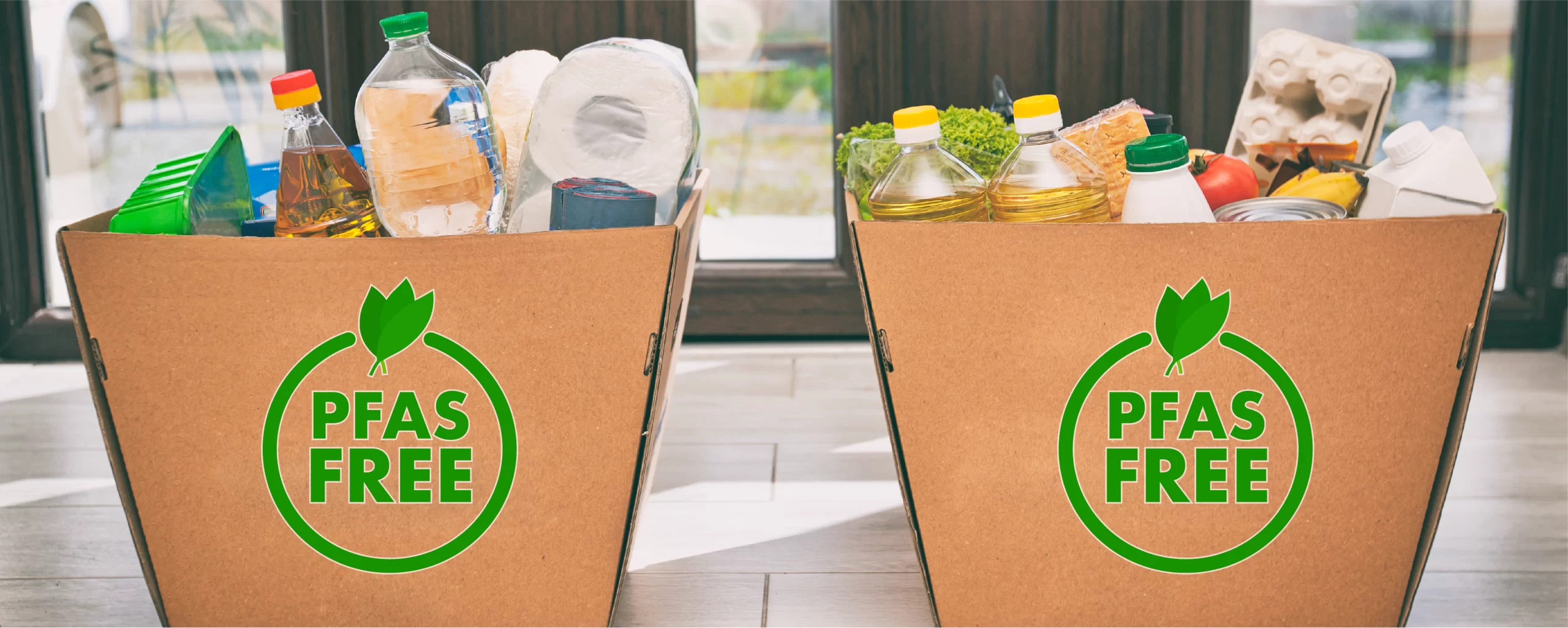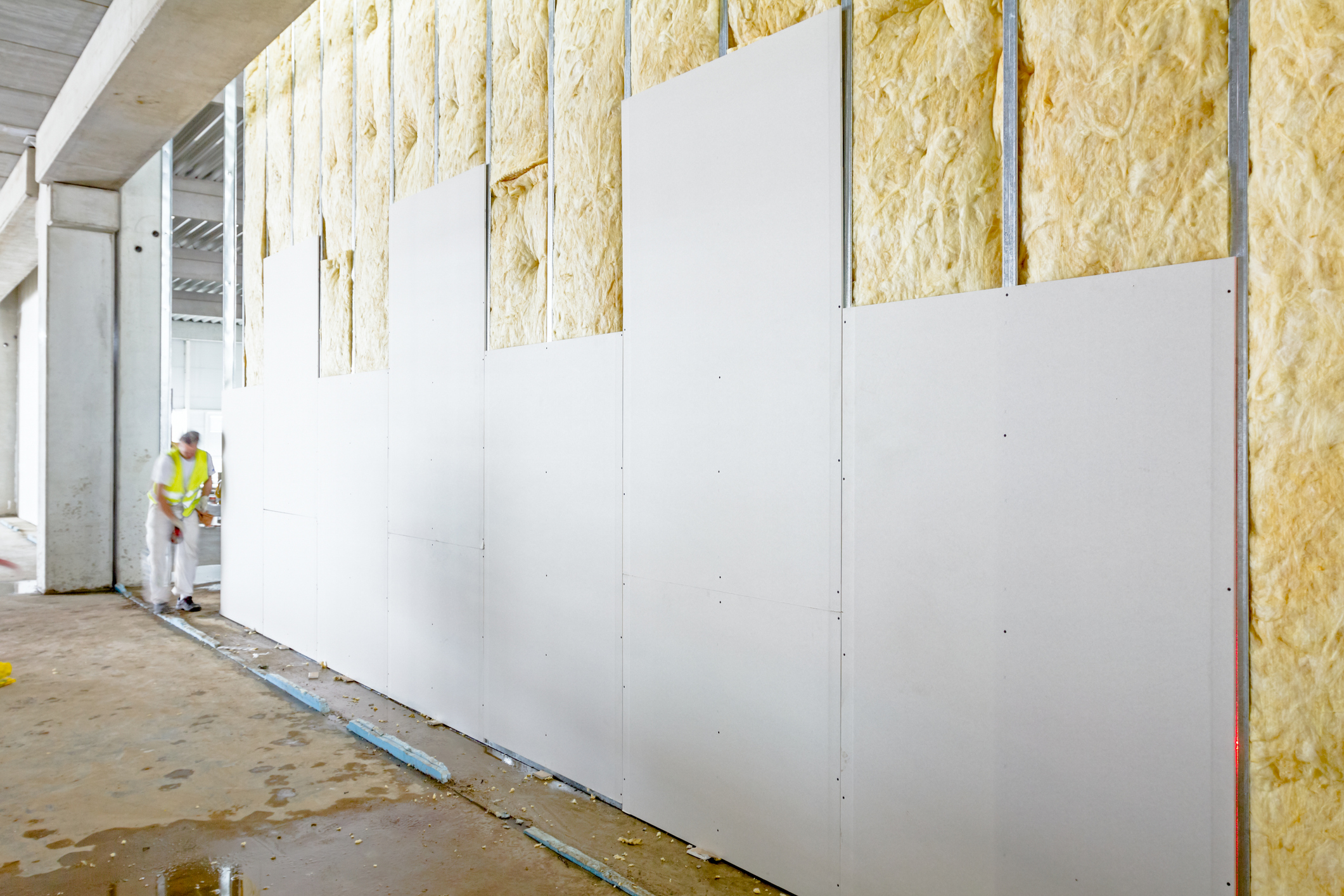Green Steel: The Future of Low-Carbon Steel Production
The world is rapidly evolving and growing, but the steel industry has remained a foundational force for manufacturing and infrastructure. However, it is also resulting in massive carbon dioxide (CO2) emissions, contributing to almost 8 percent of global greenhouse gas emissions. Thus, to maintain the pace of development globally and increase steel production without accelerating climate change issues, the implementation of sustainable practices is the need of the moment. In all the catastrophes, green steel is thriving as a viable approach that can mitigate carbonization by steel manufacturing using innovative methods and technologies.
Know About Green Steel
Green steel is steel that significantly reduces or diminishes greenhouse gas emissions during production through low-carbon technologies. It stands for climate-neutral steel, produced through the latest technologies to significantly reduce the environmental impact of steel production. The main source of manufacturing green steel is renewable energy and reducing agents that subside the environment’s impact, whereas the traditional steel production method depends on fossil fuels, releasing carbon into the atmosphere.
The focus here is particularly on the Low Emission Steel Standard (Less), which enables comparability of decarbonization efforts in the steel industry for the first time. With Less, steel products are classified according to their CO2 footprint, making them transparent and understandable for the end user.
Reasons for Transitioning to Sustainable Steel
Adapting green technology for producing steel stems from a few pertinent factors:-
- Regulation and Laws: As the days pass, governments across the globe are enacting stringent laws and regulations to prevent and reduce carbon emissions. Initiatives like Net Zero, the Paris Agreement, and the European Union’s Green Deal are pressing industries to assimilate sustainability into their regimes.
- Economic Prospects: Investment in green steel technologies can push economic growth through new job opportunities in sectors that are emerging rapidly following sustainability.
- Market Demand: The need for sustainable products is increasing, following businesses’ and consumers’ demands and prioritizing them. Thus, green steel is witnessing huge prospects due to environmental impact.
- Economic Development: The advent of green steel promotes economic growth by infusing new job opportunities following innovation and adaptation in emerging sectors, focusing on sustainable practices.
Why Is It Important to Switch to Eco-Friendly Steel?
Steel is one of the most used metals globally, and its utility can be witnessed in day-to-day life from utensils, chairs, electronic and electrical items, washing machines, and other important items used for household and commercial purposes. Also, the infrastructure is heavily dependent on it. However, the procurement and the process of creating it give rise to excessive carbon dioxide. Coal-fired blast furnaces, which release significant amounts of carbon dioxide into the atmosphere, still produce around 75% of steel. Huge amounts of energy are also needed to heat the furnaces to above 1,000 °C. Overall, steel production accounts for around 8% of global emissions. So, green steel is precisely the manufacturing of steel without using fossil fuels.
Methods for Producing Green Steel
One profound solution to manufacturing steel is green hydrogen, as it has the potential to reduce the carbon footprint. According to MHI (Mitsubishi Heavy Industries Group), hydrogen emits only water while burning. Also, if an electrolysis process is put into place to produce hydrogen using renewable energy and water, then the steel produced will be CO2 emission-free.
Even if carbon-fossil fuels and CCUS (carbon capture, utilization, and storage) technologies are used, hydrogen can still be low-carbon, which is called blue hydrogen.
Another viable option is electric arc furnaces (EAFs), which are rapidly replacing the traditional versions. However, they are not always sources of renewable energy. Thus, the steel produced through them may not be environmentally friendly and green steel.
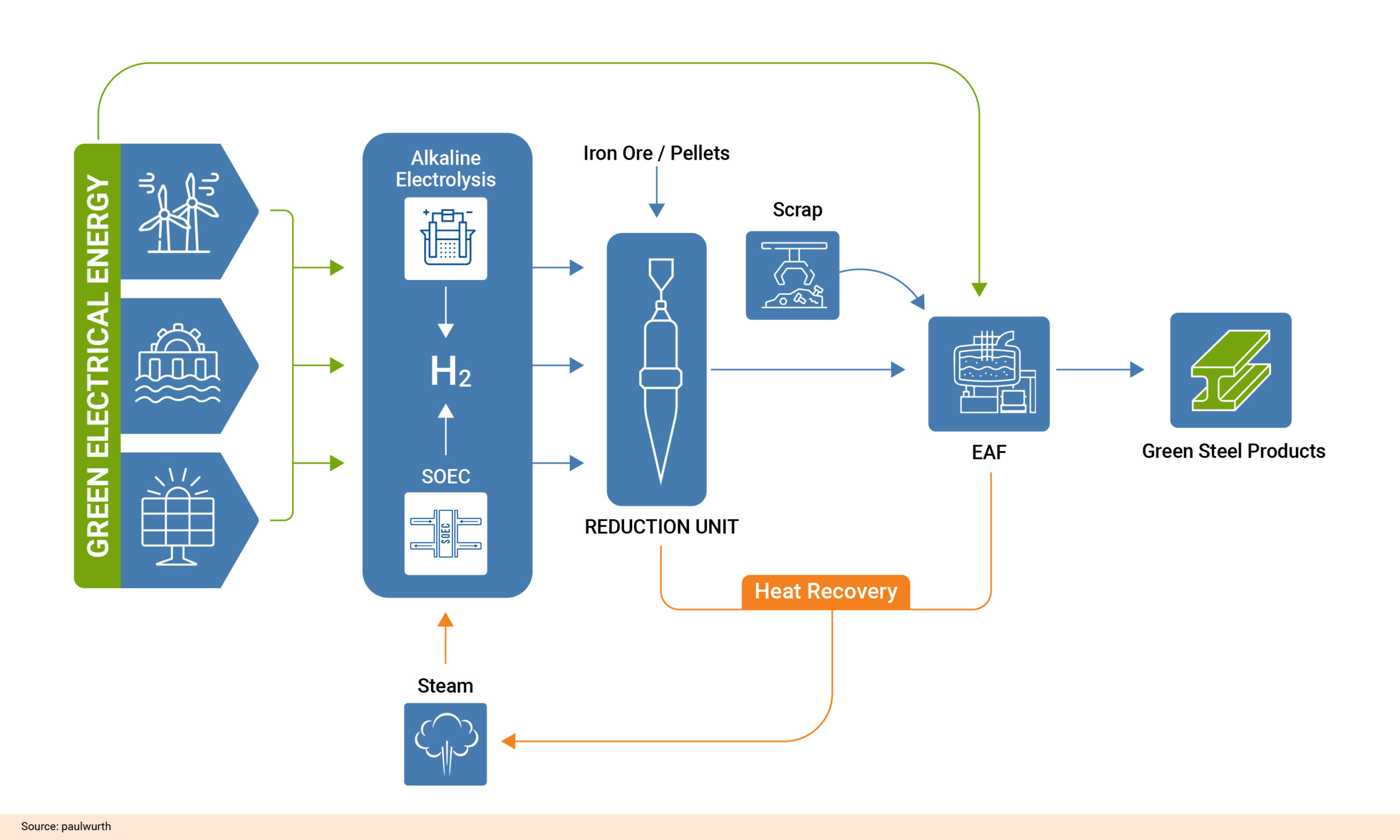
Figure: Green Steel Manufacturing Process
The global iron and steel market was valued at USD 1,676.24 billion in 2022 and is expected to grow at a compound annual growth rate (CAGR) of 3.8% from 2023 to 2030.
Manufacturers Leading in Green Steel Production
Looking at the dire need for innovation and securing the sustainable requirements for a greener planet, several established players are willingly manufacturing green steel or wish to make a difference.
- Essar Steel: The company has received approval to establish a plant in Saudi Arabia to manufacture green flat steel with a 4 million tonnes/year capacity.
- Emsteel: The leading steel manufacturer signed an MOU (Memorandum of Understanding) with Danieli, an Italian equipment supplier. The company has also signed an agreement with a Chinese counterpart, Delong Steel Group, to build a factory for low-carbon raw materials for steelmaking.
- Vulcan Green Steel: The Oman-based company has signed an MOU with Volkswagen, the giant car manufacturer, to supply 300,000 tonnes/ year of low-carbon steel by 2027. Volkswagen intends to reduce its carbon emissions by 70 percent.
- Bahrain Steel: The steel manufacturer is all set to supply 4 million tonnes/year of DR (direct-reduced) iron ore pellet to Essar group for its GSA (Green Steel Arabia) project at Ras Al Khair, Saudi Arabia.
Top Startups Innovating in Green Steel
The steel industry is witnessing plenty of startups mushrooming to make it greener through sustainable technical innovations and low-carbon production methods. Here are a few:-
- Boston Metal: The US startup aims to use MOE (molten oxide electrolysis) technology to produce steel using electricity instead of coal.
- GravityHy: The France-based startup focuses on encouraging hydrogen-based iron production to decarbonize the steel industry while meeting the goals set by the European Union.
- H2 Green Steel: The Sweden-based startup is trailblazing the use of hydrogen-based reduction processes as an alternative to coal with green hydrogen in producing steel.
- Electra: The startup is developing a low-temperature electrochemical process to produce steel using renewable electricity. This process would eliminate the need for high-temperature furnaces while diminishing carbon emissions.
Benefits of Green Steel
Green steel offers several advantages to manufacturers, consumers, and the environment alike. Here are some benefits:-
- Improved Product Performance: By integrating advanced techniques and innovative methods, green steel can exhibit enhanced durability, flexibility, and quality compared to traditional steel. Thus, industries like construction and automotive can benefit from the sustainable alternative.
- Lower Carbon Footprint: Green steel’s carbon emissions can be lessened by up to 95 percent compared to relying on fossil fuels. Moreover, it is essential to meet the needs for combating climate change in the long run.
- Meets Consumer Demands: As consumers are rapidly becoming aware of sustainable products, green steel serves its purpose. They want uncompromising quality with eco-friendly features, and green steel provides them with brand and market appeal.
- Maximizes Recycling: Resource efficiency is a salient benefit that attracts industries. Interestingly, up to 93 percent of recycled scrap can be used in industry processes, significantly reducing energy consumption.
- Reduces Environmental Impact: Green steel provides some of the best benefits, including less waste generation, low pollution, and less deforestation.
Challenges in Transitioning to Sustainable Steel
Traversing to green steel production is a convoluted process that needs to be addressed before it can be effectively adopted worldwide. Here are the major challenges:
- Energy Supply Issues: The massive energy required to manufacture green steel is not available. Thus, the constraints on renewable energy are proving to be a big deterrent to creating green steel.
- Technology Barriers: Several green steel technologies are still in their infancy or early development. Thus, processing and producing green steel at an industrial scale is challenging.
- Lack of Infrastructure: Green steel production requires huge infrastructure and investment initially. It includes facilities like renewable energy generation, hydrogen production, and carbon capture technologies, which are expensive and take time to build.
Global Collaborations and Initiatives for Sustainable Steel
The global green steel initiative is vehemently supported by many organizations and nations to spread awareness regarding its importance. Several collaborations and research projects are under the pipeline, too, given the reason. Some of them are:
International Collaborations: Myriad global industries, research institutes, governments, and private companies are forming partnerships to expedite green steel production through innovation and sustainability. Giant steel manufacturer ArcelorMittal is working with ThyssenKrupp on a pilot project to develop technologies for the quality production of green steel.
Research Projects: A plethora of research projects and initiatives centered on creating new technologies for electrifying steel production processes are under work. Projects like HYBRIT (Hydrogen Breakthrough Ironmaking Technology) are exhibiting hydrogen-based direct reduction methods at a magnanimous scale.
European Union Deal: The EU is aiming at decarbonization using electrification, hydrogen, and carbon capture utilization and storage (CCUS).
Conclusion
Green steel is growing as a synonym for transformation toward manufacturing based on safe and sustainable practices in one of the crucial industries. The carbon footprint of the industry can be reduced significantly by infusing innovative and smart technologies like ammonia-based reduction, direct reduced iron techniques, ammonia-based reduction methods, hydrogen-based direct reduction processes, and electric arc furnaces, besides serving the escalating demand for high-quality steel globally.
Industry leaders and key stakeholders must collaborate to ensure opportunities while treading the challenging pathway offered by green steel manufacturing. Issues like high initial costs, tough regulations, and strategy implementation must be dealt with togetherly while achieving the idea of sustainability. Moreover, robust policy frameworks internationally can ensure the bettering of infrastructure by laying down the foundation for a cleaner environment.
